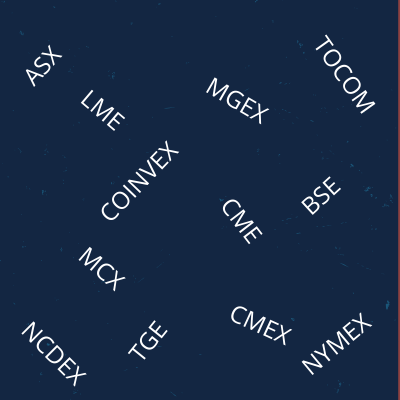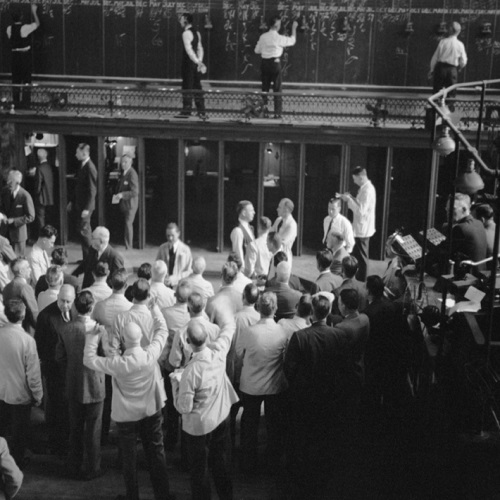The Various Commodity Exchanges
Find out how some of the major commodity exchanges, such as the Chicago Mercantile Exchange and the Tokyo Commodity Exchange evolved both in name and in policy over time.

Exchange This!
Without commodities exchanges facilitating transactions, today’s market size and scope could not exist. If that were the case, economic growth would be much lower. The quality of life around the world would be greatly reduced. That is why there is such an emphasis on maintaining an orderly market for selling commodities.
Marketing evolution
Commodity exchanges evolved from farmers, merchants and others meeting face to face to buy and sell goods. The Chicago Mercantile Exchange was created in 1898 from the Chicago Butter and Egg Board. The Tokyo Commodity Exchange was formed from the merger of the Tokyo Gold Exchange, the Tokyo Rubber Exchange and the Tokyo Textile Exchange.
The names from the early days of each manifest that the exchanges were created to facilitate trading in basic commodity products. From that, there was a natural development for more sophisticated forms of products, such as creating futures to provide for security in the markets.
As economies grew due to significant developments such as The Industrial Revolutions and globalisation, commodities exchanges naturally expanded, too. As part of this evolution, more and more trading is done electronically as well as being dedicated to its financial products rather than physical commodities.
Why invest?
As with stocks and bonds, commodities can be utilised for a wide range of investing, speculating tactics and strategies, both short term and long term. The Chicago Mercantile Exchange, the Tokyo Commodity Exchange and others manage to facilitate these transactions. Without the organised structures of formal exchanges, it would be impossible to day trade for a profit from a physical distance. Traders would have to be physically on the floor of the exchange in order to transact orders.
For many, that physical presence is a huge competitive edge. Being on the floor results in a “feel for the market.” Traders can then buy and sell based on the situational awareness from being on the floor of the exchange. This can be derived from many unique factors. A trader might follow the actions of another broker for a certain commodity and trade based on what the other is doing.
Even though Commodity costs are influenced by basic supply and demand from the market, huge profits can be booked from those actually at an exchange. There can also be price movement as a result of speculators, seeking to profit from factors other than fundamental economic forces. Being on the floor of the Tokyo Exchange or the Chicago Mercantile Exchange can allow for profits based on those speculative forces.
Long term value, short term profit
While the exchanges are inevitably changing and becoming more electronic, there are some things that will always remain the same. The most important is the most basic tenet of trading: the greatest profits in the commodities markets are made from investing in the long-term movements, which are due to fundamental changes in the supply and demand of a commodity.






